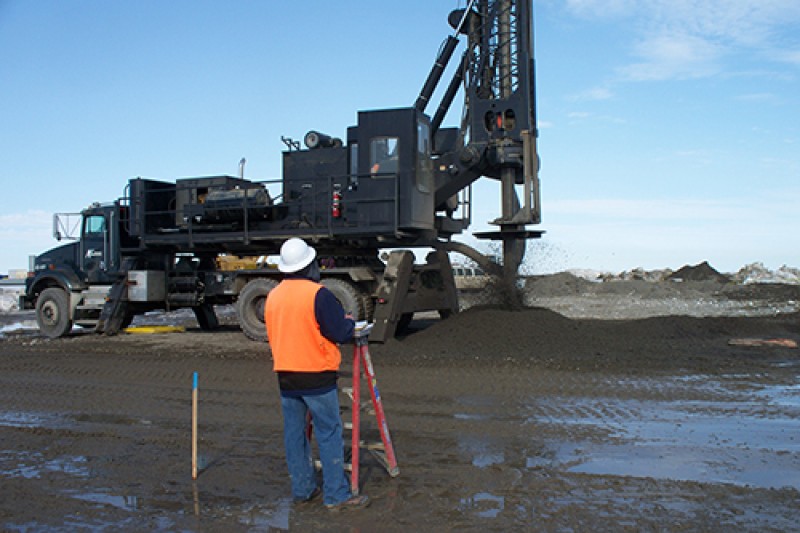Rotary drilling is a technique which employs a rotating drill bit that grinds/pulverizes the soil/rock as the drill bit advances and then uses a medium (such as compressed air, water, or drilling mud) to transport the drill cuttings up to the ground surface. Rotary drilling is most commonly associated with water and oil well drilling, but also plays an important role in geotechnical exploration. Rotary drilling often incorporates the usage of driven steel casing to help reinforce the drilled borehole and prevent borehole collapse, while facilitating cuttings transport out of the borehole. Rotary drilling creates a borehole (either cased or open-hole) which serves as a conduit to allow for the advancement and retrieval of various geotechnical soil and rock sampling tooling and/or subsurface instrumentation.
Rotary drilling
is especially useful for drilling in very coarse and/or dense soils, as well as
bedrock, as it is relatively unaffected by the presence of hard materials (such
as rock). Mud rotary drilling is also very useful for collecting undisturbed
samples of sand soils which are located below the groundwater table, as the
drilling mud serves to equalize the hydrostatic pressures between the open
borehole and the surrounding formation, which reduces the potential for sand heave
and increases the potential for the collection of an undisturbed sample
(important for soil liquefaction analysis). However, rotary drilling requires
an additional level of effort and support equipment and therefore can be
relatively expensive to conduct and/or difficult to mobilize to remote areas.




